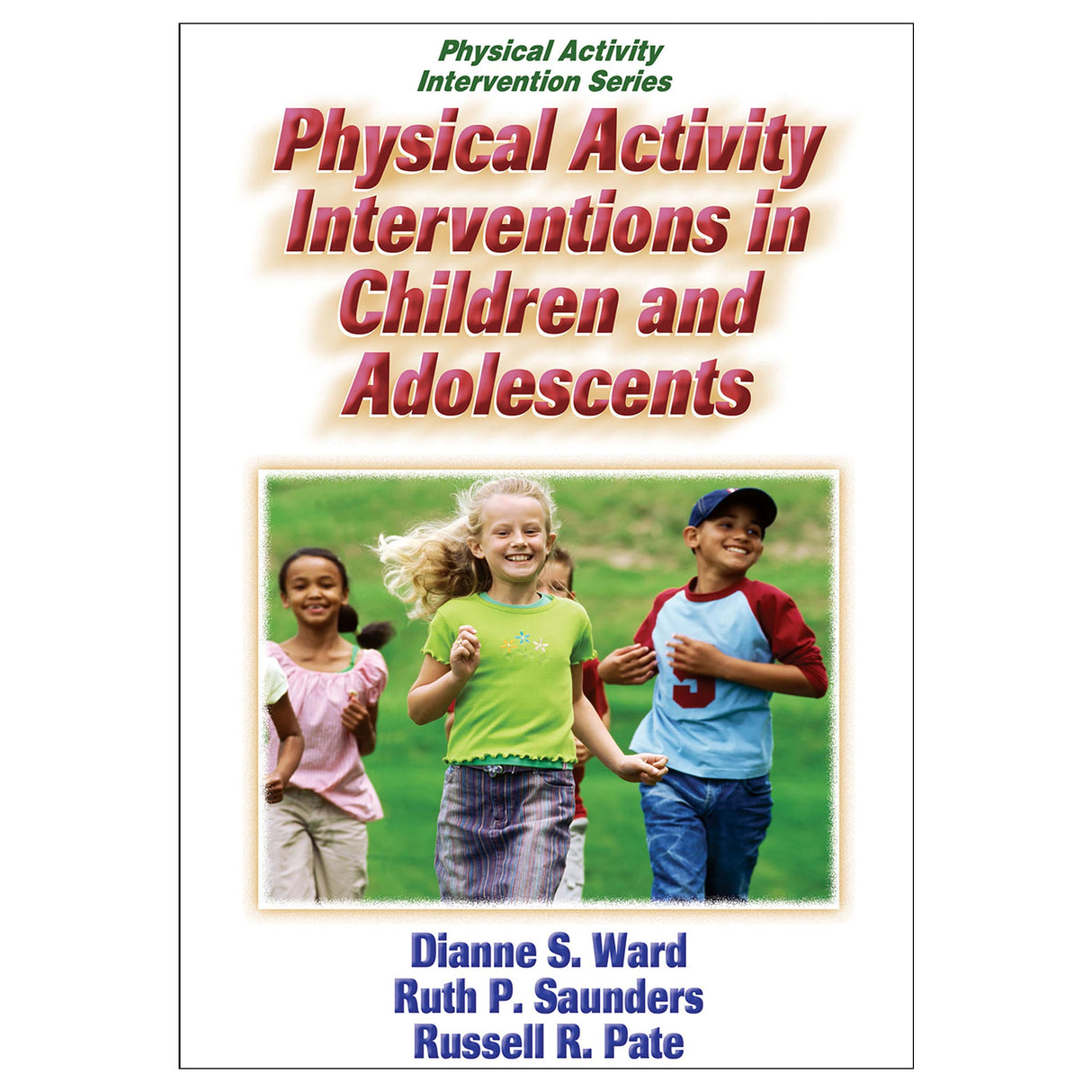Physical Activity Interventions in Children and Adolescents
$79.95 CAD
With modern conveniences and technology always beckoning, today's children are less active and more obese than ever—which leads to an ever-increasing need for more effective interventions to help them become more active. Physical Activity Interventions in Children and Adolescents addresses this problem by helping professionals in schools, health departments, recreation centers, state agencies, and not-for-profit organizations design, implement, and evaluate interventions to promote and increase physical activity among children and adolescents.
Part of the Physical Activity Intervention Series, Physical Activity Interventions in Children and Adolescents provides information on current levels of youth physical activity and presents a basic understanding of the issues associated with it. The book offers a clear and reader-friendly overview of theories of behavior change that have been used in developing physical activity interventions in a variety of settings and methods for program evaluation. Specific recommendations for physical activity from various professional and health organizations are included as well. The book also provides
-descriptive epidemiology of youth physical activity that helps identify the changes in activity as children age;
-insights into the potential role of the family and the community in providing physical activity opportunities for youth;
-guidance for the development of collaborative relationships among agencies and organizations to promote physical activity in the community; and
-a review of available instruments for measuring physical activity in youth populations, including self-report instruments and step counters.
Practical application of the information covered in Physical Activity Interventions in Children and Adolescents is demonstrated through real-world interventions that have been implemented in various settings. The programs were selected based on their demonstrated effectiveness, potential for success, or unique features. Strengths and weaknesses of each intervention are highlighted. In addition to the presentation of existing programs, guidelines for the development of new programs are presented. Sample worksheets serve as valuable tools in evaluating and designing interventions in areas where proven programs are not yet available.
The text follows a three-part progression. Part I provides an orientation to activity in young people, describing how to change behavior and introducing the settings in which such behavior change programs might be developed. In part II, documented interventions are examined for programs in schools, community organizations, and home and health care settings. Part III explores intervention design, assisting those who want to design their own interventions for specific populations. Descriptions of program evaluation, including useful measurement instruments, are detailed as well.
The result is a book that professionals can use for learning about physical activity and the role it plays in the lives of youth. It will guide readers in designing successful interventions that can change physical activity behavior for the children and adolescents with whom they work.
Audience
An applied professional reference for exercise scientists, health promotion specialists, and public health professionals; also an excellent resource for recreation and community centers, physical education curricula, or any program that interacts with children.
Physical Activity Intervention Series Preface
Preface
Acknowledgments
Part I. Physical Activity Behavior
Chapter 1. Physical Activity Behavior Unique to Children and Adolescents
-Physical Activity Definitions
-Purposes of Physical Activity
-Physical Activity Guidelines
-Summary
Chapter 2. The Role of Theory in Understanding Physical Activity Behavior
-Explaining Behavior with Theory
-Defining Social Cognitive Theory
-Applying Behavior Theory Using Theory to Facilitate Behavior Change
-Avoiding Common Mistakes when Using Theory
-Summary
Chapter 3. Physical Activity Behavior Intervention
-Types of Settings
-Choosing an Intervention Setting
-Organizing Activities
-Designing an Intervention for Skill Development
-Summary
Part II. Documented Interventions
Chapter 4. School-Based Interventions
-Making the Most of the School Setting
-Using Behavior Theory in School-Based Interventions
-Developing Quality Physical Education Programs
-Evaluating Physical Education Interventions
-Adding Physical Activity to the Classroom
-Promoting Physical Activity with Comprehensive and Coordinated Interventions
-Working Effectively with Schools
-Summary
Chapter 5. Community Interventions
-Making the Most of the Community Setting
-Using Behavior Theory in Community Interventions
-Organizing Community Interventions
-Describing Successful Community Interventions
-Working in and With Communities
-References
Chapter 6. Family-Based Interventions in Home and Health Care Settings
-Making the Most of Home and Health Care Settings
-Organizing Family-Based Interventions
-Using Behavior Theory in Family-Based Interventions
-Evaluating Home and Health Care Interventions
-Working with Families in Home and Health Care Settings
-Summary
Part III. Intervention Design
Chapter 7. Planning Physical Activity Programs
-Step 1 Identify and Engage Partners
-Step 2 Plan the Program Based on Needs
-Summary
Chapter 8. Measuring Physical Activity
-Subjective Measures of Physical Activity
-Objective Measures of Physical Activity
-Influences on Physical Activity
-Physical Fitness Measures
-Summary
Chapter 9. Planning for Physical Activity Program Evaluation
-Review of Program Planning
-Step 3 Focus the Evaluation
-Summary
Chapter 10. Implementing and Monitoring Physical Activity Programs
-Process Evaluation Elements
-Step 4 Carry Out Program and Implement Program Evaluation Plan
-Step 5 Analyze and Interpret Results
-Step 6 Disseminate Results
-Summary
Appendix
References
Index
About the Authors
“This book is an important primer for those interested in helping children and adolescents become more active…. I heartily recommend this volume.”
The Prevention Researcher





